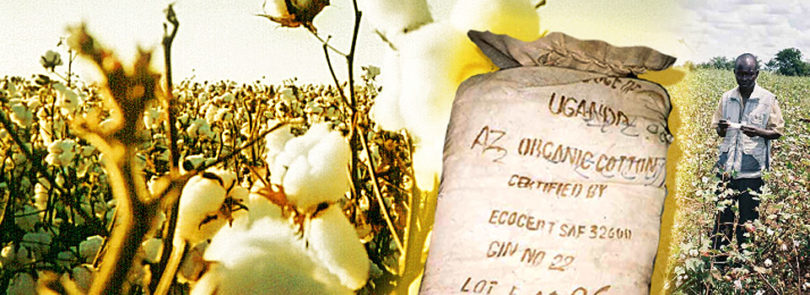Cotton is known across Africa as “white gold.” In Uganda, it is a cash crop that puts money in the pockets of small-scale farmers. And when turned into textiles and apparel, it holds the promise of fueling an economic revival in the East African nation.
To help Ugandan cotton farmers learn to do business in America, Glenn Ames, director of UGA’s Office of International Public Service and Outreach, and UGA colleagues, in partnership with the Ugandan Investment Authority and the East Africa-America Business Council in Atlanta, hosted training workshops to begin preparing Ugandan textile and apparel companies to enter the U.S. market.
The workshops offered sessions on American culture, how to deal with U.S. businesses, and how to build partnerships with distributors, agents and other companies. Finally, the team helped six export-ready companies prepare exhibits for one of the most influential trade shows in the apparel industry – the Sourcing at MAGIC Marketplace held at the Las Vegas Convention Center.
In February 2006, representatives from the companies and from the Ugandan Investment Authority headed for Vegas.
“They had no concept how big and diverse the U.S. market is, and they had no idea prices were so low in the U.S.,” said Job Dieleman, an international trade consultant formerly with UGA. “In fact, several looked for fabric suppliers for their own businesses.”
But the trade show also made it clear that Ugandan companies cannot compete head-on with the low prices that China’s apparel industry offers. As a landlocked country, transportation alone adds to the cost of Ugandan goods. Luckily, the companies are in an excellent position to compete in a niche market: organic cotton apparel, such as baby clothes. Those products created the most interest at the Las Vegas trade show and may put Uganda on the radar screen of U.S. investors.
“Northern Uganda has a cottage industry of organic cotton growers,” Dieleman said. “The organic cotton market is less price sensitive, is not a commodity, and is a small niche but a fast-growing one.”
Uganda began growing organic cotton in 1994 and has the potential to be a large producer. Rich soils require little or no fertilizer; natural predators and intercropping eliminate the need for pesticides. And from a marketing perspective, American consumers are likely to welcome the opportunity to buy environmentally friendly products that also help better the lives of small producers and their families.
“Now we’re in the next stage of the project – taking U.S. companies to Kampala to build on the business relationships that were developed at MAGIC in February,” Ames said.
Led by Ames and Dieleman in October 2006, representatives from five U.S. companies toured Ugandan textile and apparel plants and participated in a conference on the U.S. organic apparel market. During the trade mission, Ames and Dieleman visited farmers in northern Uganda where cotton production is undergoing a revival.
Ames expected that orders for Ugandan goods would result from the trade mission. So far, one company has placed an order and other U.S. firms have requested samples to test market. Increased sales resulting from this project will help develop sustainable business relationships with U.S. companies.
This project is supported by a grant from the U.S. Department of State’s Bureau of Educational and Cultural Affairs, Office of Citizen Exchanges.








